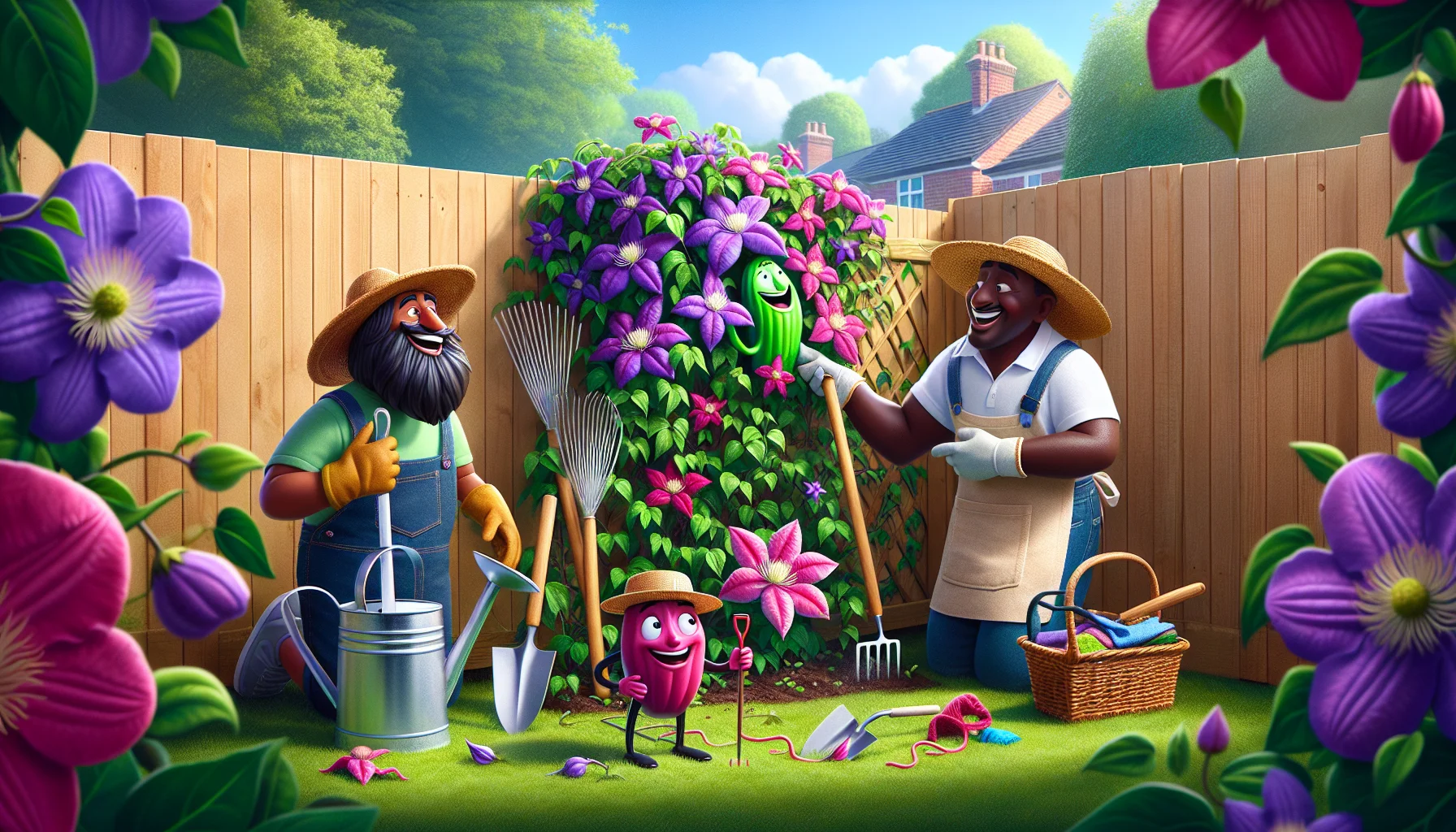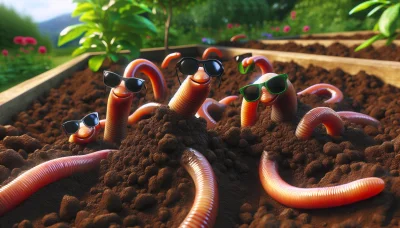Clematis fence Quiz
Test Your Knowledge
Question of
Clematis Fence: The Ultimate Guide to Beautifying Your Garden
Clematis plants, with their vibrant blooms and lush foliage, offer an exquisite solution for gardeners looking to add both privacy and beauty to their outdoor spaces. By training these climbing plants along fences or trellises, one can create a living barrier that not only enhances the aesthetic appeal of the garden but also provides a habitat for beneficial insects and birds. This guide explores the concept of using clematis as a natural fence, detailing the selection of varieties, planting tips, and maintenance practices to ensure a thriving, blooming barrier that captivates the senses throughout the seasons.
Choosing the Right Clematis Varieties for Your Fence
When it comes to beautifying your fence with climbing plants, clematis stands out as a popular choice due to its vibrant blooms and versatile climbing nature. However, with over 300 species and countless hybrids, selecting the right varieties for your fence is crucial. The ideal clematis should not only complement your garden's aesthetic but also thrive in your local climate and soil conditions. Additionally, considering the growth habit and bloom time can ensure a display that fits your gardening goals, whether you're looking for a season-long color or a spectacular spring bloom.
- Clematis 'Jackmanii' - Famous for its deep purple flowers, it's a vigorous grower that blooms in late summer.
- Clematis montana - Offers a profusion of white or pink flowers in spring and can cover large areas quickly.
- Clematis 'Nelly Moser' - Known for its striking pink and white striped flowers, this variety prefers shaded areas and blooms in late spring and again in autumn.
- Clematis 'Henryi' - With its large, white flowers, it's a stunning choice for a more formal look.
- Clematis 'The President' - This variety produces deep blue-purple blooms and can flower from late spring to early autumn.
- Clematis 'Niobe' - Boasts rich, velvety red flowers throughout the summer months, making it a bold choice for any fence.
Planting and Training Clematis on Fences
Planting clematis near fences and training them to grow upwards can transform your garden's landscape, creating a beautiful, floral display. Clematis vines are versatile and can be encouraged to cover a fence with a bit of care and strategic planning. The process involves selecting the right spot, preparing the soil, planting the clematis, and then gently guiding it to climb the fence. With patience and proper care, your clematis will flourish, covering your fence with vibrant blooms.
- Select a suitable location on your fence that receives at least 6 hours of sunlight daily. Clematis thrives in well-lit areas but can tolerate partial shade.
- Prepare the soil by digging a hole about 18 inches away from the base of the fence to prevent root damage. The hole should be twice as wide and as deep as the root ball of your clematis plant.
- Enrich the planting hole with a mix of compost and garden soil to provide nutrients for your clematis.
- Plant your clematis so that the crown of the plant (where the roots meet the stem) is about 2-3 inches below the soil surface. This encourages new shoots to grow from the base.
- Water your newly planted clematis thoroughly to settle the soil around the roots and help with the initial stress of planting.
- Install a trellis or support system against the fence if one is not already in place. This will give the clematis something to climb on as it grows.
- Gently tie the clematis vine to the trellis or fence with soft plant ties, taking care not to damage the stems. Guide new growth towards the fence, attaching it loosely to encourage climbing.
- Mulch around the base of the plant with organic material to retain moisture and suppress weeds.
- Water your clematis regularly, especially during dry spells, to keep the soil moist but not waterlogged.
- Prune your clematis according to its pruning group to encourage healthy growth and abundant flowering.
Caring for Your Clematis Fence
Clematis plants require attentive care to thrive and produce their signature vibrant blooms. Watering is crucial, especially during the first year of growth; aim to keep the soil consistently moist but not waterlogged. Fertilizing should be done in the spring with a balanced 10-10-10 fertilizer to support their flowering potential. Pruning practices vary depending on the type of clematis, but generally, dead or weak stems should be removed in late winter or early spring to promote healthy growth and flowering.
- Water regularly to maintain moist soil, especially during dry spells.
- Apply a balanced fertilizer in early spring to encourage blooms.
- Prune according to your clematis group to stimulate flowering.
- Mulch around the base to keep the roots cool and moist.
- Provide a trellis or support for climbing and optimal growth.
Common Problems and Solutions for Clematis Fences
When growing clematis on fences, gardeners often dream of lush foliage and vibrant blooms creating a living tapestry. However, achieving this vision can sometimes be challenged by various issues that affect the health and beauty of clematis. Understanding these common problems and how to address them can ensure your clematis fences thrive, adding charm and color to your garden.
- Powdery Mildew: This fungal disease appears as a white powdery substance on leaves. To combat this, ensure your clematis has good air circulation and consider applying a fungicide recommended for powdery mildew.
- Clematis Wilt: Symptoms include wilting and black discoloration of stems and leaves. The best approach is to cut back the affected parts to healthy tissue and dispose of them properly to prevent the spread of the disease.
- Pests: Aphids and spider mites can be a nuisance. Use insecticidal soap or neem oil to treat infestations, and encourage natural predators like ladybugs into your garden.
- Improper Pruning: Clematis vines require pruning to promote healthy growth, but incorrect pruning can hinder blooming. Familiarize yourself with the pruning group of your clematis to ensure you're pruning at the right time and in the correct manner.
- Nutrient Deficiencies: Yellowing leaves or poor growth may indicate a lack of essential nutrients. Applying a balanced, slow-release fertilizer can help address these deficiencies and promote healthy growth.
Design Ideas for Clematis Fences
Incorporating clematis fences into your garden design not only adds a vibrant splash of color but also brings a dynamic vertical element to your outdoor space. Clematis vines, with their wide array of colors and blooms, can transform a simple fence into a living piece of art. Whether you're looking to create a serene garden retreat or a lively backdrop for your outdoor gatherings, clematis fences offer versatility and beauty. Here are some inspiration and suggestions to help you weave these enchanting vines into your garden design.
- Integrate clematis with climbing roses for a romantic, cottage garden look.
- Use a simple wooden trellis as a support for clematis to create a natural privacy screen.
- Pair different clematis varieties together to achieve a succession of blooms from early spring to late autumn.
- Accentuate garden pathways with clematis arches for a whimsical touch.
- Combine clematis with evergreen climbers to maintain interest even in the winter months.
- Highlight the entrance to your garden with a clematis-clad pergola or gateway.
- Opt for a minimalist approach by training clematis on metal frames or geometric structures for a modern look.
Conclusion: Transforming Your Garden with a Clematis Fence
Integrating a clematis fence into your garden offers a multitude of benefits, enhancing both its aesthetic and environmental appeal. This versatile climber brings a vibrant splash of color, with its lush flowers enriching your garden's palette from spring through fall. Beyond beauty, clematis plants can also contribute to creating a more private and serene outdoor space, acting as a natural screen that invites biodiversity. They are relatively easy to care for, requiring minimal maintenance once established, making them an excellent choice for gardeners of all skill levels. If you're looking to elevate your garden's charm and create a living masterpiece that captivates the senses, consider the enchanting allure of a clematis fence. It's not just a boundary; it's a transformation, inviting you and your garden into a world of beauty and tranquility.












